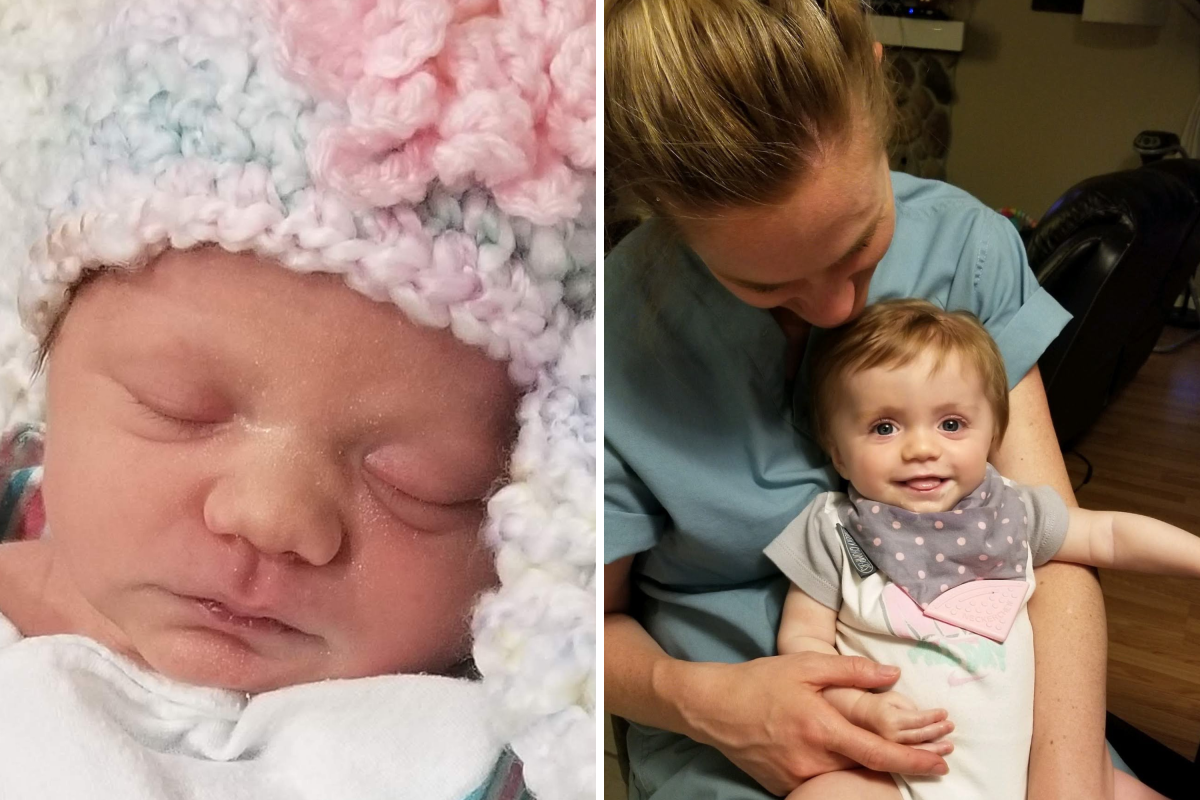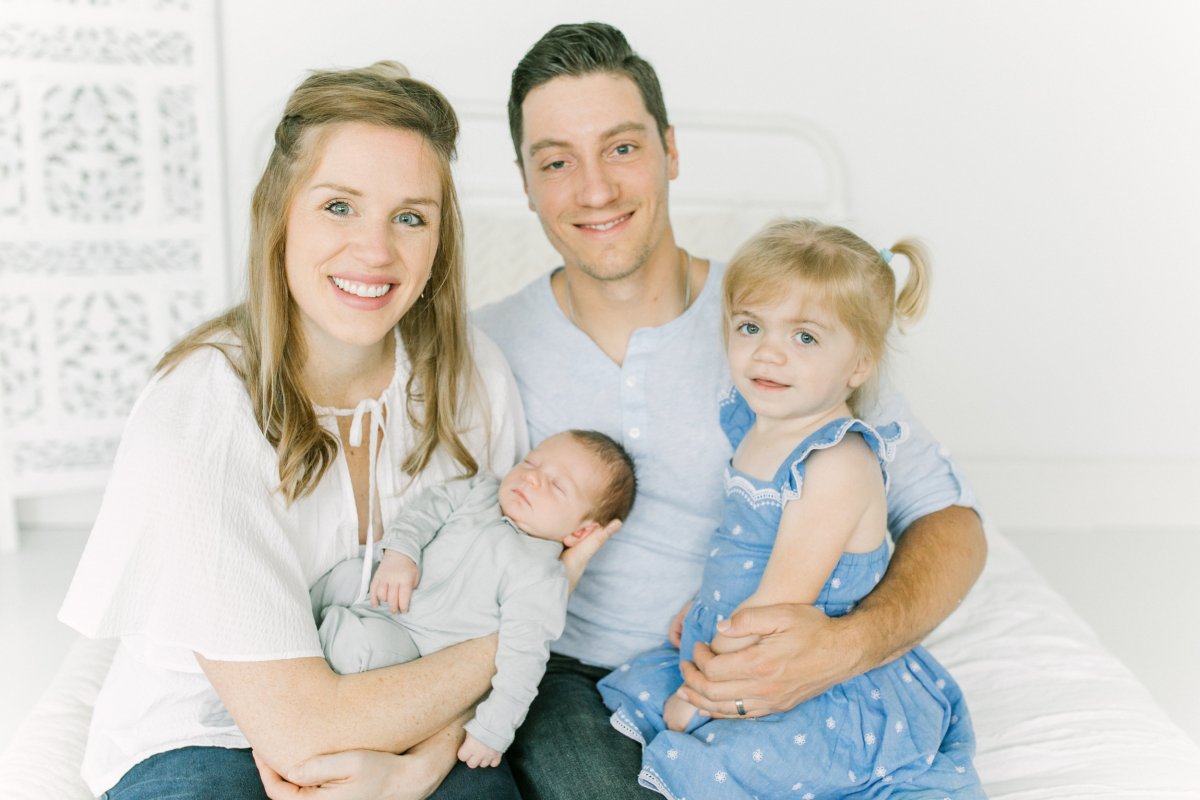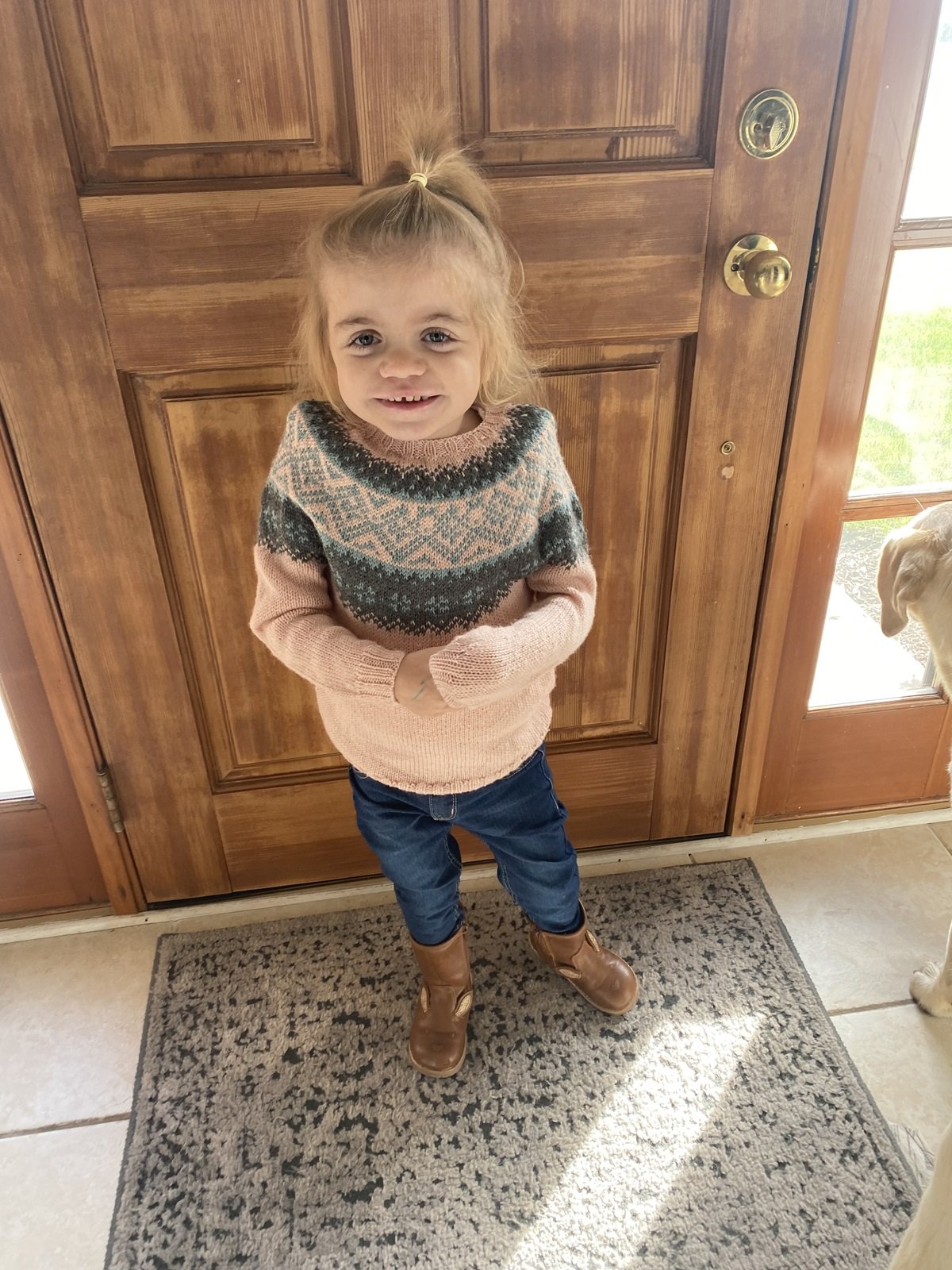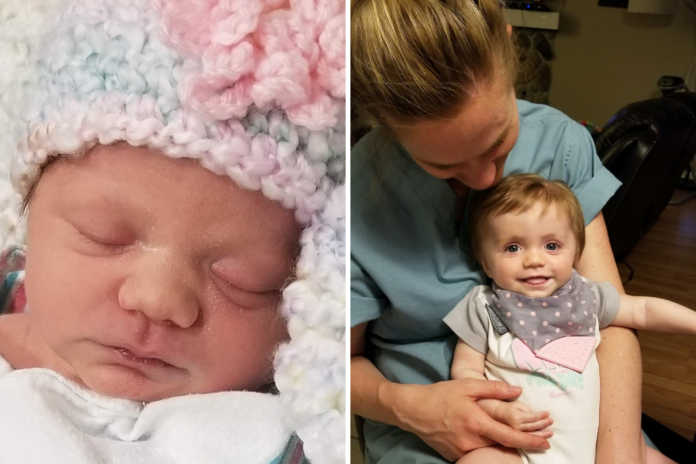Holding back tears while tucking her four-year-old into bed, Erin Stoop asks daughter Olivia if she can say, “I love you.”
The 36-year-old breaks down as her firstborn struggles to complete the sentence, and finally responds by saying, “I love…me.”
Just months before a viral video captured this agonizing moment, Olivia was able to communicate and had started to form short sentences, but the reality is she will be non-verbal by the time she is in first grade. This is the result of a diagnosis of Sanfillipo Syndrome—which is also known as childhood Alzheimer’s—as symptoms include an altered mental state, according to The American Society for Biochemistry and Molecular Biology.
Her mother from Wisconsin told Newsweek that speech regression is just one of many symptoms that come with the disease.
TikTok/@saving_liv
In November last year, Stoop shared the heartbreaking reality of Sanfillipo Syndrome on TikTok (@saving_liv) to raise awareness of the rare condition.
The clip, which has amassed 9.9 million views, is captioned: “I didn’t expect her words to fade so quickly. We expect full loss of words by age 6, and a life expectancy of mid-teens. We need a cure before it’s too late for Liv.”
Stoop told Newsweek: “We want people to know what it is—we refer to it as childhood Alzheimer’s on social media but it’s not formally that. It is neurodegenerative brain damage that takes her skills and ability to understand things away, causes seizures and leads to an early death—childhood dementia puts something familiar in their head and a little understanding.”
Olivia was just like any other baby for the first two years of her life, with the exception of her propensity for infections and her abnormally loose stools. At first, her parents, both pharmacists, thought she might have a digestive problem. However, a family friend who works as a pediatric neurologist, pointed out Olivia’s unusual facial features.

Erin Stoop/TikTok/@saving_liv
“She said that she thought Liv had Sanfilippo Syndrome; I had never heard of it,” Stoop said. “So that weekend I dove into all types of lysosomal storage disorders. I read about Sanfilippo and prayed that wasn’t it. To be honest I didn’t think that it was what Liv had, because we hadn’t experienced all the behavioral issues yet, mainly just medical issues.”
What Is Sanfilippo Syndrome?
According to Cara O’Neill, the chief science officer of the Cure Sanfilippo Foundation, a non-profit organization that works to advance treatment options for children with Sanfilippo, it has a spectrum of severity and is a fatal genetic condition. O’Neill previously told Newsweek that the syndrome, which only occurs in about 1 in 70,000 births, affects the child’s brain as well as their body.
It is classified as a rare disease because it affects fewer than 200,000 in the U.S., a definition that was established in the Orphan Drug Act of 1983.
According to the National Organization for Rare Disorders, lysosomal storage diseases are genetic metabolic disorders in which enzyme deficiencies cause harmful substances to accumulate in cells. With around 50 types, these diseases can impact various body parts like the skeleton, brain, skin, heart and nervous system.
Stoop said: “I have a screenshot in my phone of symptoms of Sanfilippo Syndrome that was snapped before her formal diagnosis. I knew in my heart she had one of them, I just didn’t know which one.”
Stoop and her husband Tyler, 38, requested further tests for Olivia at her two-year pediatrician check up but because the condition is so rare—it isn’t something medics actively test for. However, the family friend was a saving grace for them as this led to a quicker diagnosis.
On March 28, 2022, a blood test revealed that Olivia has the disorder.
Stoop told Newsweek: “Fortunately because of that family friend, we were able to rush our genetics appointment and order the right tests at the geneticist office. I would hope the geneticist would have anyway based on Liv’s appearance and medical history, but it helped.”
What Causes Sanfilippo Syndrome?
The Boston Children’s Hospital website explains that “Sanfilippo Syndrome is inherited in an autosomal recessive pattern, which means that an affected child has received one defective copy of the gene responsible for enzyme production from each of their parents.” The couple were completely unaware that they were carriers.
The Australian Sanfilippo Children’s Foundation states that the odds of two people who both carry the same defective gene having a child with Sanfilippo Type B (like Olivia) are approximately 1 in 211,000.
“Our families are fairly healthy so this isn’t what we envisioned,” said Stoop, who was 35 weeks pregnant with her son Liam when she found out about Olivia’s condition.
“When we found out, we went through a roller-coaster of emotions, the first one being sadness and grief then we got past the hard and dark phase, onto what can I do for my child?” Stoop told Newsweek.
When both parents are carriers, there is a 25 percent probability with each pregnancy that the child will inherit two copies of the mutated gene and consequently have Sanfilippo syndrome. There’s also a 50 percent chance of having a child who isn’t affected but is a carrier, like their son Liam turned out to be following testing after birth. There is also a 25 percent chance of having a child who isn’t affected nor a carrier.

Provided by Erin Stoop
Hope For Sanfilippo Syndrome Sufferers
There is currently no FDA-approved treatment or cure for Sanfilippo, but according to O’Neill, research is being undertaken and there is hope.
Erin and Tyler have been tirelessly fundraising for clinical trials ever since receiving Olivia’s diagnosis. Since launching a Go Fund Me in December 2022, they have raised more than $423,000. Every dollar raised goes to the Cure Sanfilippo Foundation, a 501(c)3 Not-For-Profit Organization. All net funding goes to the urgent mission to advance treatment options for children with Sanfilippo.
An excerpt from the Go Fund Me page says: “The money that was, and continues to be raised for Saving Liv, continues to go directly into the research to advance more therapies into clinical trials, so that more opportunities become available for treatment faster, which has led to these clinical trials.
“We couldn’t be more grateful for your support. We are not only fighting for Liv’s life, we are honoring those kids who have lost their battle with Sanfillipo, we are fighting for every child living with this disease, and giving hope to every family that gets this diagnosis in the future.”

TikTok/@saving_liv
Stoop explained the primary goal for the future is to make Liv “happy as possible.”
She told Newsweek: “By doing that I am able to nourish my own mental health. Liam is 22-months-old but one day he will probably fall into the big brother role.
“Liv will be a forever toddler—she may get bigger but continue to need one-on-one supervision…She will be fully dependent on us as she will also fall back on her walking.
“I thought we would have a great family relationship and see our kids go to school, play sports, go to prom, get married and have children.
“Now I am a full-time caretaker to a child that I’m going to bury,” Stoop said, while sobbing.
“Life is hard as she is hyperactive and frequently stays awake all night,” she said. “The future makes me sad and mad; it is incredibly depressing.
“Liv is an incredibly special angel on earth and our goal is to eventually find a cure—we know she is going to be a part of that and that is the light in the darkness.”
If you have a personal dilemma, let us know via [email protected]. We can ask experts for advice on relationships, family, friends, money and work and your story could be featured on Newsweek’s “What Should I Do? section.
Uncommon Knowledge
Newsweek is committed to challenging conventional wisdom and finding connections in the search for common ground.
Newsweek is committed to challenging conventional wisdom and finding connections in the search for common ground.


